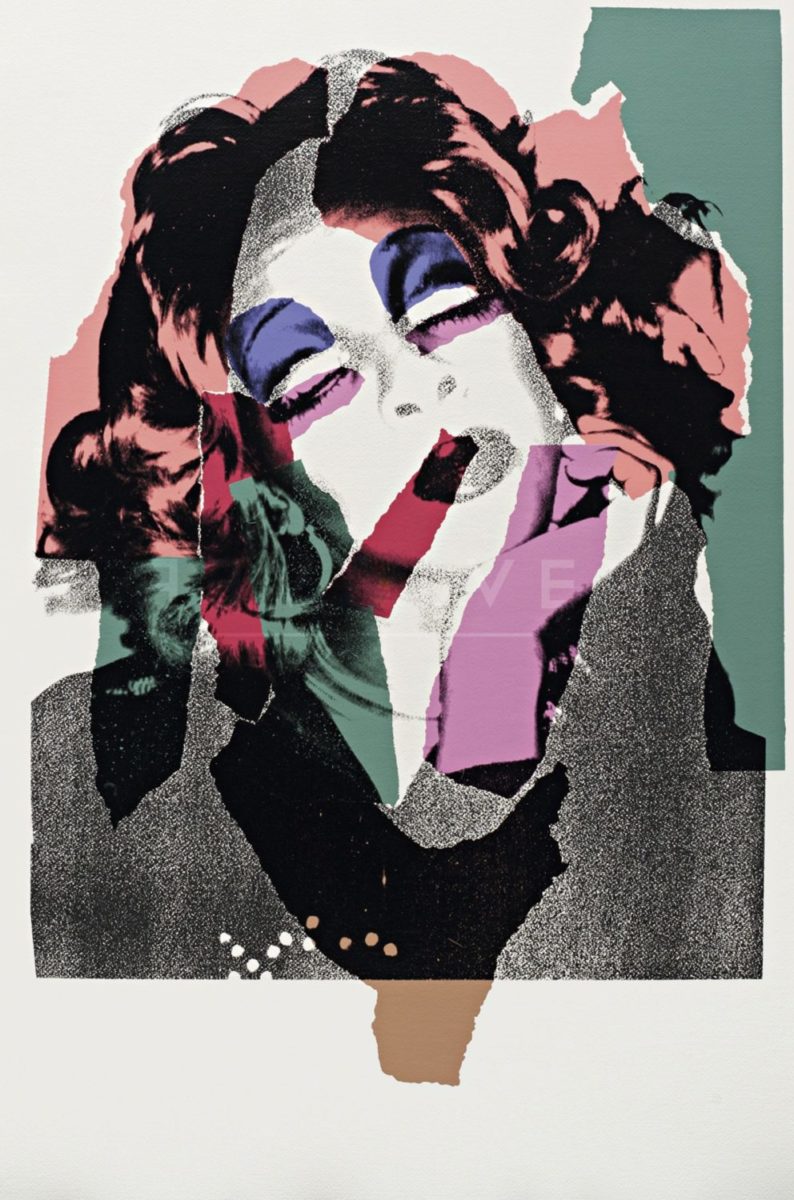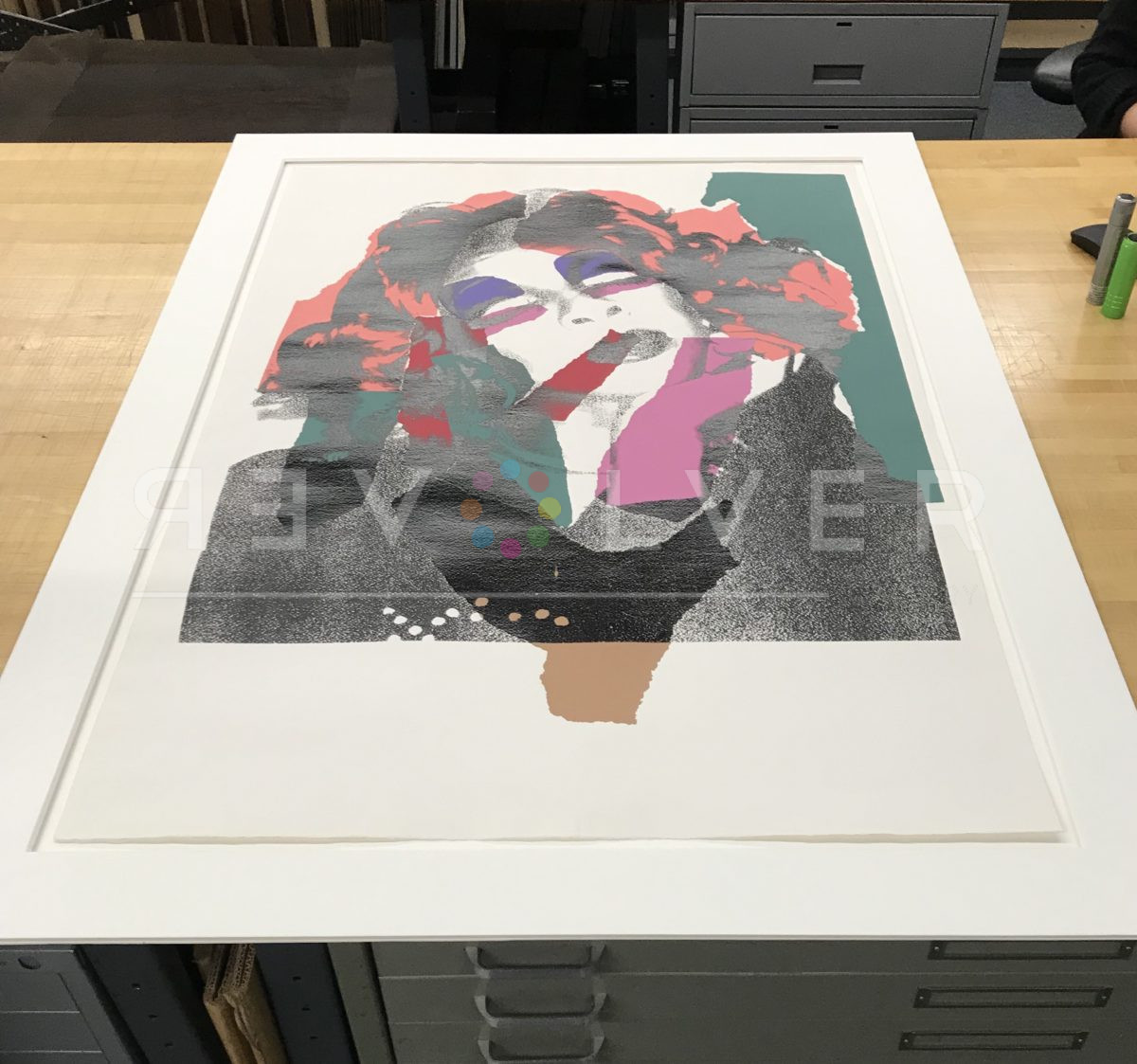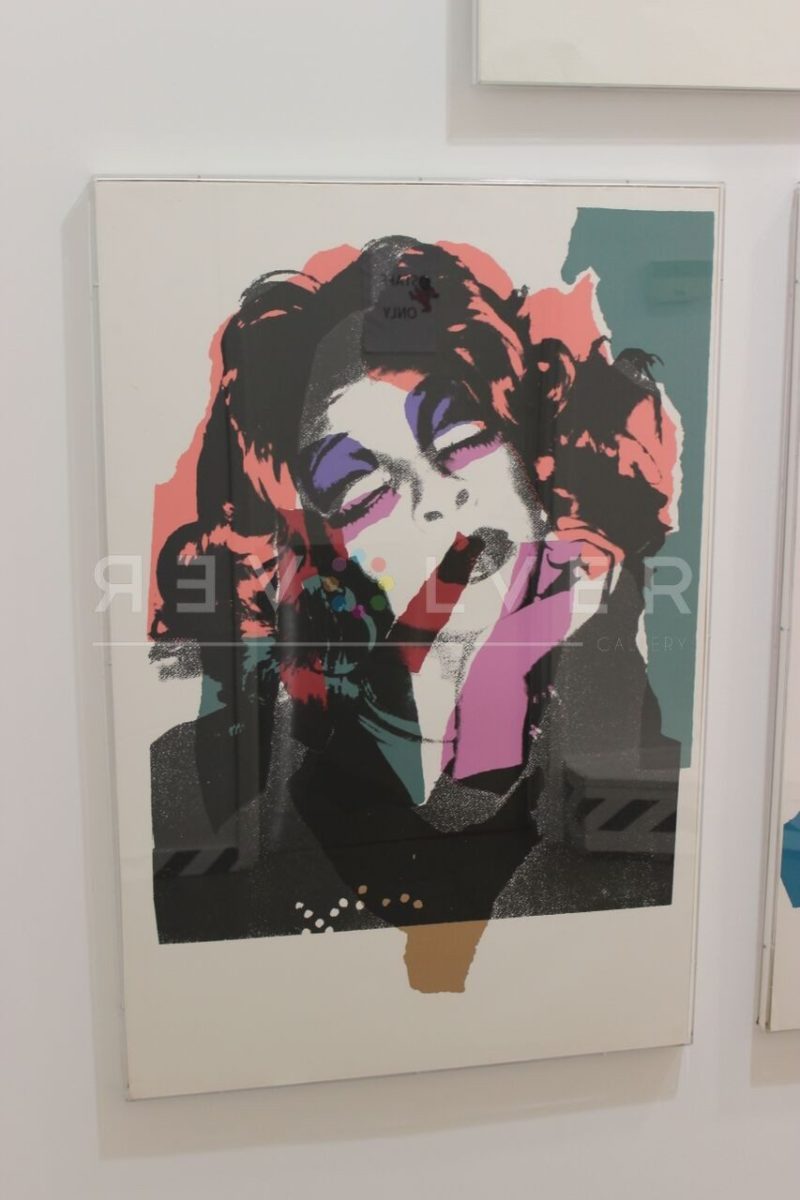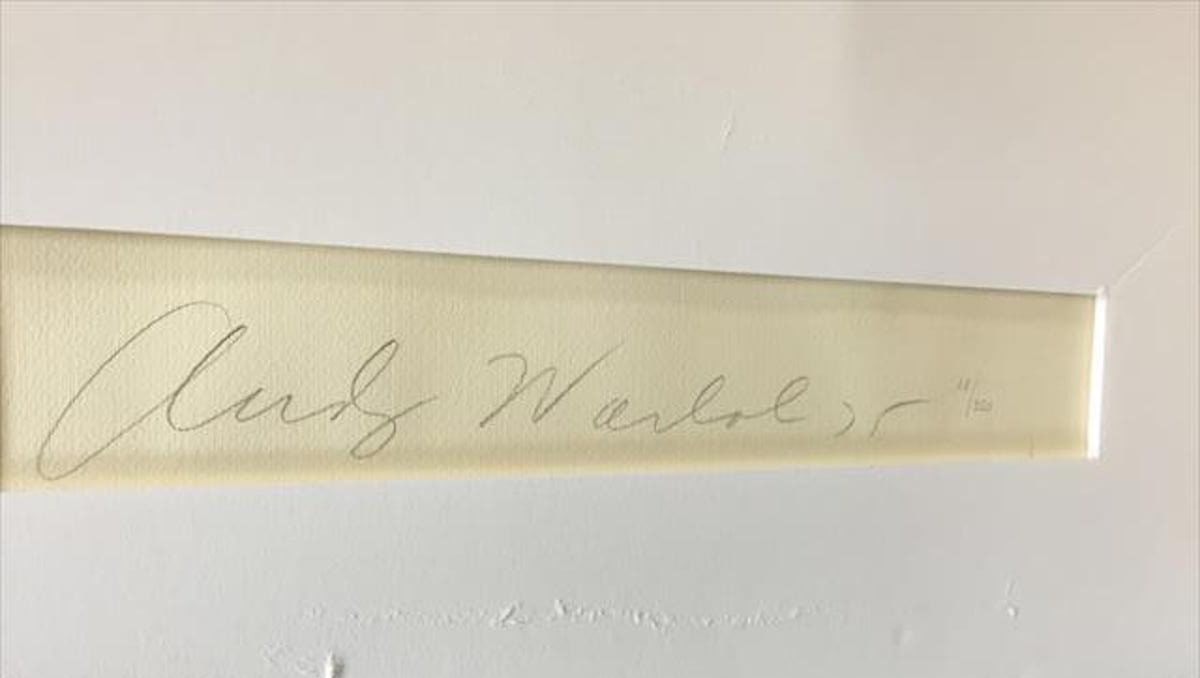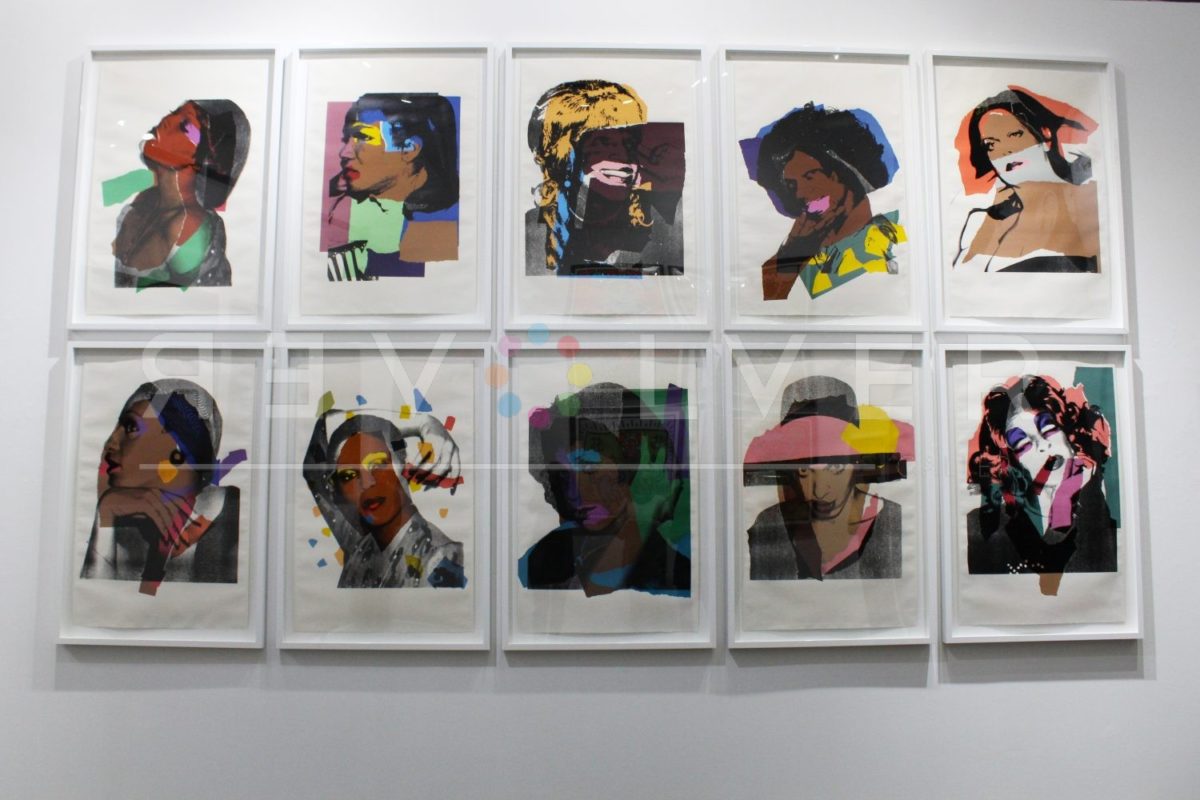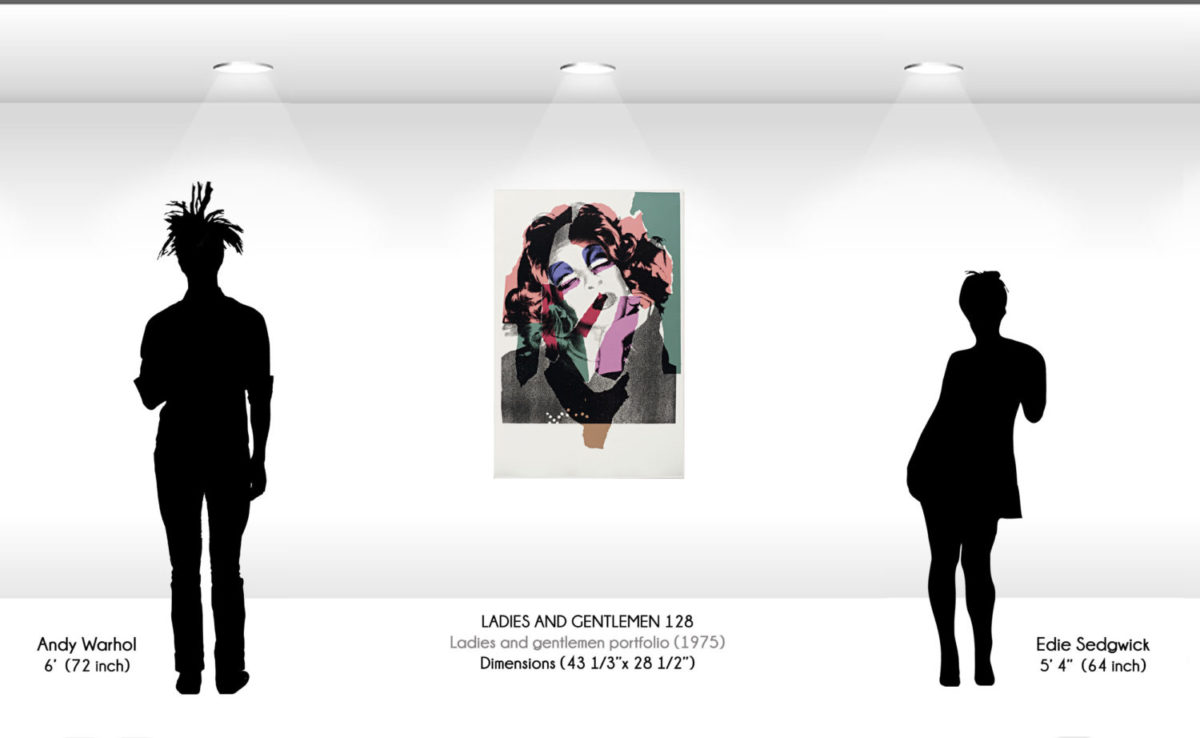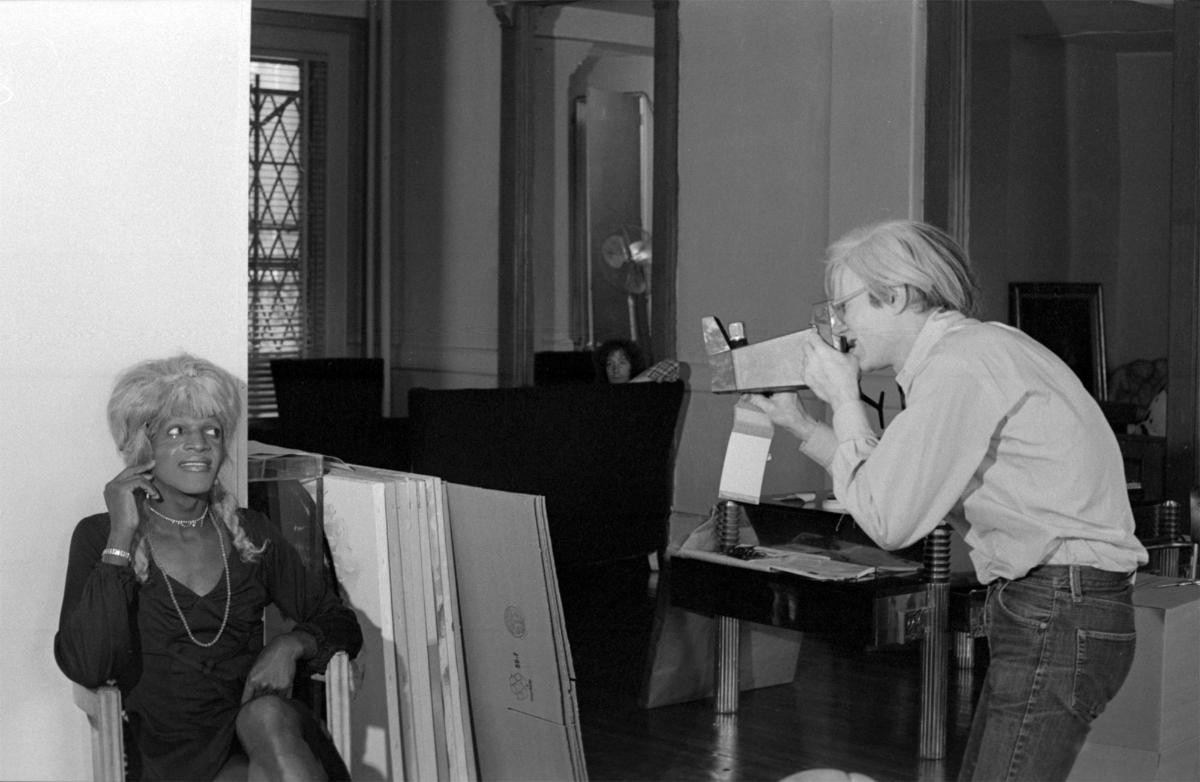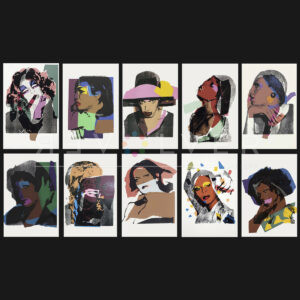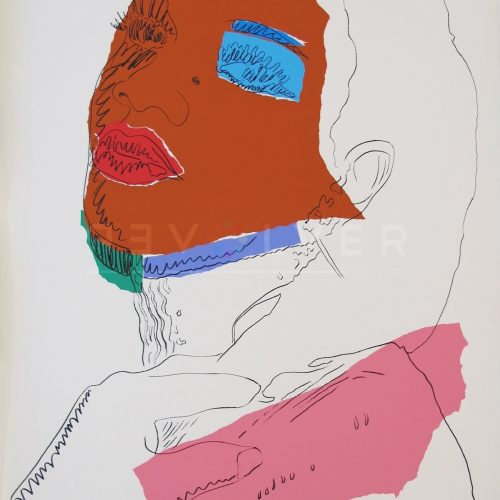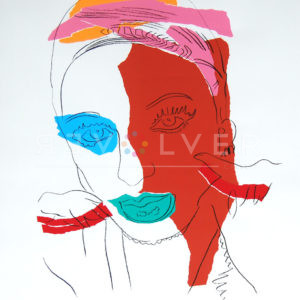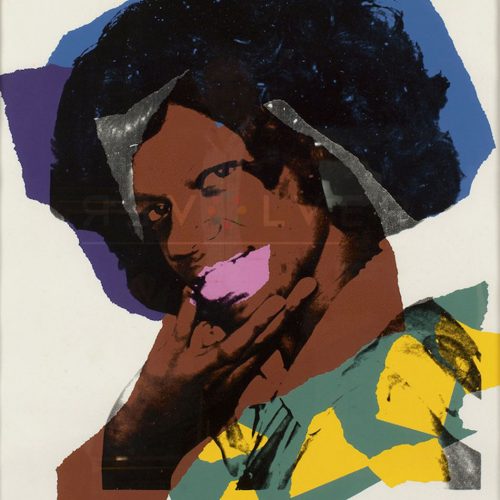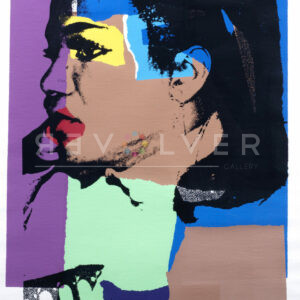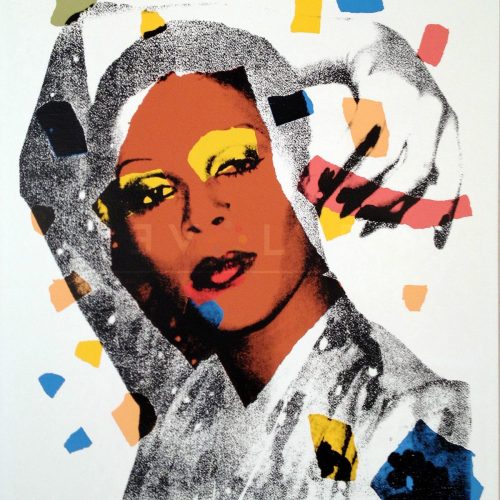Ladies and Gentlemen 128 by Andy Warhol is a screenprint from the artist’s Ladies and Gentlemen portfolio. In 1974 Warhol set out to do a collection on drag queens in New York City. What started as a project to capture more famous drag queens turned into a more local documentation of the queer community. Specifically, gadabouts of the Gilded Grape, a disco club which opened its doors that same year. The result was the Ladies and Gentlemen series, a lesser known but highly prescient work by Warhol that helped to bring transgender expression into the public eye.
Ladies and Gentlemen 128 is arguably the most intense work in the portfolio. The print exhibits the same style as its accompanying pieces, using color blocks whose placement seems to mirror the subjects’s expressions and bring their movements onto the canvas. Ladies and Gentlemen 128 stands out in that the colors are particularly bright and pastel; a combination that is both jarring and eye-catching. They evoke a kind of diva aura; a staggering display of self confidence and an almost ghostly highness. The subject’s aloof gaze when combined with the lightness of the peach and purple tones suggests someone a little too high on their own supply—an attitude that both the members of the Gilded Grape as well as the Factory sought to portray in their search for the newest “cool” factor.
For Ladies and Gentlemen 128 and similar works, Warhol instructed the subjects to dress up and pose as they saw fit. As a result, Warhol captured a large collection of powerful and spontaneous Polaroids. This gave the artist a lot of latitude to create a particularly striking collection of prints. Although most of the subjects are little known to this day, the series casts a spotlight on some well-known figures in the transgender community, such as prominent civil rights activist and drag queen Marsha P. Johnson, who appears in Ladies and Gentlemen 133.
Warhol got the idea for the series from Italian art dealer named Luciano Anselmino. Anselmino was a protege of Alexander Iolas, who Warhol worked with previously. Although the idea came from someone else, Warhol chose the Gilded Grape himself. His assistant Ronnie Cutrone and Interview magazine editor Bob Colacello would go out and scout for the drag queens. Then, they’d bring them back to the Factory for photoshoots. Warhol never formally introduced himself to the drag queens or revealed who he really was.
In most of Warhol’s earlier works, he used other people’s photographs. But after a copyright dispute over his Flowers series (taken from a magazine) he began taking his own Polaroid photos. An initial setback ended up having serendipitous consequences for the artist. This led to more socially prescient collections such as Ladies and Gentleman, as well as some of his more famous celebrity portraits like the Mick Jagger series, and other works from the 1970s and ’80s.
Ultimately, Ladies and Gentlemen 128 is a quintessential Warhol canvas. The piece exhibits some of his most fundamental design techniques that characterized his work at the height of his career. Moreover, the transgressive nature of the series signifies Warhol’s individuality and willingness to push boundaries.

